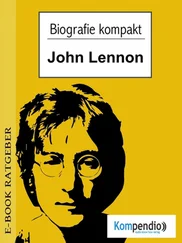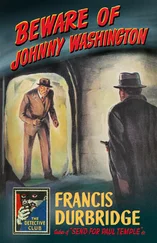Julia had originally placed John in Mosspits Infant School near Newcastle Road. When Mimi took John away from his mother, she placed him in Dovedale Infant School, which was nearer to Mendips, and further away from Julia. The move was not, as some have stated, due to John’s bad behaviour, but was intended to isolate John further from his mother and to make him more dependent on Mimi. This ruse backfired when the generation gap between those mothers of John’s fellow classmates and Mimi became a barrier to friendship or networking.
A major problem in trying to untangle what really went on in John’s childhood is that most information on John’s early years relies almost entirely on Mimi’s own recollection. Yet the exaggerated accounts of John being surrounded by the love and affection of a mother figure, with his education and all his leisure and social needs addressed, are largely fabricated. The reason behind Mimi’s rose-tinted view of John’s time at Mendips was to mask the reality of what happened with Julia and the destabilising and emotionally harmful upbringing that John received. Mimi prided herself as the standard bearer of a puritanical discipline whose rallying cry to any of young John’s protests would be: ‘It’s for your own good.’ Mimi herself stated: ‘I had no time to go playing ducks in the bath with him.’ 12This in many ways speaks volumes about her, the message seemingly being that not only was she indifferent to the needs of her young nephew, but she was a busy woman . That was in spite of the fact that Mimi had one child to look after, a husband, whom she would make sure looked after himself, and no full- or part-time job of her own. Such unwillingness to take voluntary or paid employment, along with Mimi’s own misanthropic attitude, left her socially isolated and John gradually became an unnatural focus of her attention.
Mimi lacked maternal instincts, but had the confidence to fake it. It was Uncle George who came to John’s rescue – he understood the confusion and emotional turmoil that, at such a young age, John had gone through. It was Uncle George who spent endless hours teaching the young John to read, starting with the headlines of the local paper and then helping him all the way through to picture books. This eventually grew to classic children’s books such as The Wind in the Willows , Swallows and Amazons and the Just William series. It was George who played the parental role. With studied indifference to the effects of the absence of other family members on young John, Mimi would declare: ‘George would see him to bed with a smile most nights.’ 13
John’s older cousin Leila recalled that, notwithstanding George’s night-time security job, ‘he took us all to the pictures [and] to the park’, and he allowed the children to have a picnic in the garden shed. 14George loved John in a way that Mimi could never dream of. Maybe it was George’s own insight into Mimi’s destructiveness that gave him some semblance of understanding towards what young John Winston Lennon had to endure. Mimi had always had herself at the forefront of her thoughts. She may have developed this attitude from having to take on the responsibility of looking after her four younger sisters, demanding deference and obedience from them.
Mimi needed the reassurance of acceptance from those she felt were her peers, those who were professionals, self-employed, those of independent means – the cultivated and university educated. Those who fell outside this circle were ‘common’. In essence, Mimi was a snob. After George Harrison’s first visit to Mendips, Mimi was to comment: ‘You always do go for the low-class types, don’t you, John?’ 15She needed John to gain acceptance into the magic circle of friends whom she saw as the better half of society. The problem was that she had gained serious black marks on her venture into middle-class suburbia. She had made herself and George look like a pair of common house-breakers with Mimi’s hunger for a better and more prestigious house. The sight of the pair spending hours humping furniture over a backyard fence from one house to the other must have proved a shocking scene for those who viewed it – think a 1940s version of The Beverly Hillbillies , minus the humour. Because of her greed for the house, Mimi didn’t consider how she and her husband might have looked to others. She never considered the housing shortage of war-torn Liverpool.
Mimi’s lack of acceptance from her neighbours also came in the shape of her husband George. He was a quiet and decent man, liked by all who met him. But he was also a functioning alcoholic and compulsive gambler. George, still a relatively young and attractive man when he married Mimi, had at that time some degree of standing in the community. He had a pleasant personality and was deemed a gentleman by those around him. He was presented with an inscribed tankard by the landlord and patrons of his local pub, such was his sociability. But a pleasant personality was not enough to hide his reputation as a hard drinker. Mimi wasn’t fully aware that his twin diseases were public knowledge before they married. In Mimi’s eyes, George now became ‘damaged goods’, which goes some way towards explaining her constant putdowns of him. The final nail in the coffin for George’s credibility was his failed effort to become an entrepreneur in the shape of independent bookmaker, a venture carried out from the confines of Mendips. Historian Ross McKibbin has described the area of George’s ‘employment’ as ‘a large and sophisticated industry [which] was constructed to meet the demands of the small better’. A press with a huge circulation told him (more rarely her) what he needed to know to make an informed bet; an army of tipsters was at hand to assist him further; and, above all, in most pubs and clubs, in nearly every factory or workshop and on the streets of every working-class community, there was a bookmaker with whom he could make that bet. There was only one problem: it was illegal. 16
Illegal bookmaking was made possible in working-class areas due to a team of ‘bookies’ runners’, a lookout or two, a safe place (usually a crowded pub) for the bookie to operate from and the safety of being surrounded by a supply of gamblers provided by the densely populated area. But George’s bookmakers in Woolton, which operated out of his own home of Mendips, stuck out like a sore thumb.
A major factor in Mimi’s permission for Mendips’ use as a bookies’ shop was greed. Her student lodgers complained of ‘paying over the odds’ for their rent, at least by comparison to similar student digs. Cynthia Lennon, who lived with Mimi after she and John were married, believed that ‘Mimi loved three things: money, Lennon and her cats, in that order’. 17
Essentially Mimi married a man whom she could dominate, and with the added promise of a hefty inheritance. When this didn’t materialise, she was prepared to risk the negative and criminal consequences of running a bookmakers at home. Even with her background in nursing, at a time of labour shortages and plentiful opportunities for people with her experience, she never worked in paid employment when she was married. For women in her position, it wasn’t the thing to do. She would rather witness a stream of dubious strangers make a beeline to her front door, but not before furtively glancing around for plainclothes policemen or nosy neighbours, than go out to work herself. The Beverly Hillbillies nature of Mimi’s arrival at Mendips, her marriage to a known chronic alcoholic and gambler, and their use of Mendips as a substitute for Royal Ascot led to the total ostracism of Mimi by her neighbours. Her cold manner didn’t help to persuade her neighbours that she should be given a second chance.
Читать дальше












